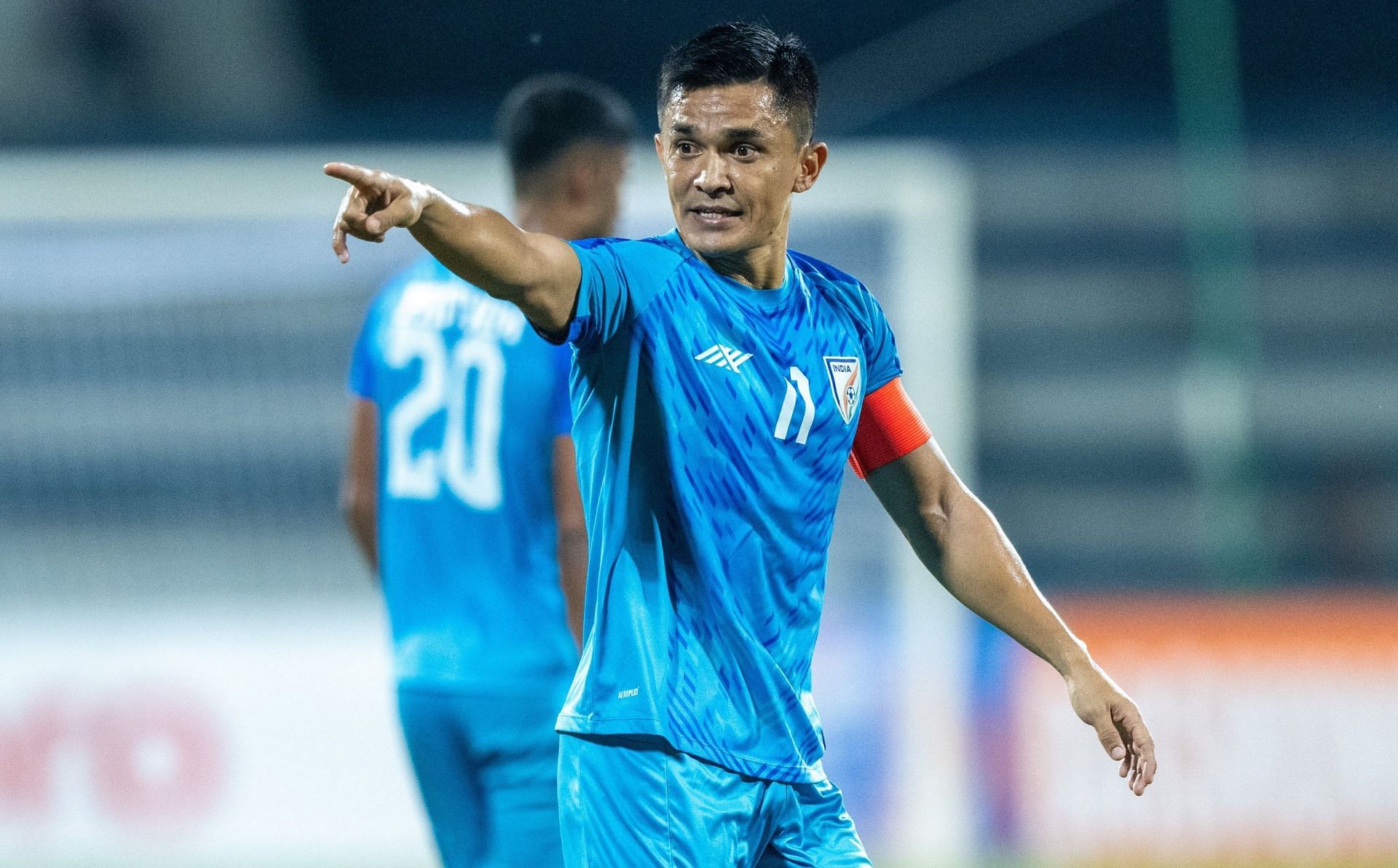
3 reasons why it will be challenging for India to find Sunil Chhetri's replacement
Sunil Chhetri’s retirement from the Indian national team seemed inevitable, but it certainly hit every supporter hard. On a regular Thursday morning, the long-serving Indian skipper dropped the bombshell news on social media.
Chhetri will play his 151st and final game in the iconic blue jersey on June 6 against Kuwait, with India’s hopes of reaching the third round of the 2026 FIFA World Cup Qualifiers at stake. Fittingly, the 39-year-old will end his career at the Salt Lake Stadium in Kolkata, where it all began for him.
Chhetri has broken several records and won multiple honors, but his position alongside Cristiano Ronaldo and Lionel Messi as the third highest active goalscorer in international football will forever be etched in the history of Indian football.
After scoring 94 goals and carrying India on his shoulders countless times, the dreaded questions posed over the last half-decade suddenly become a reality.
Who will replace Sunil Chhetri? Can India ever recreate another goal-scoring phenomenon? The answers seem blurry at the moment, despite head coach Igor Stimac trying out several combinations in the number nine position over the past few years.
It will undoubtedly take time for the national setup to find a regular striker, let alone someone of Chhetri’s caliber. Here are three vital reasons why that is the case.
#1 ISL teams preferring foreign strikers over Indian strikers
Perhaps this is the primary reason why the dreaded question about Sunil Chhetri’s replacement has arisen. The Indian Super League (ISL) has significantly contributed to Indian football’s progress by providing the younger players with a platform to compete alongside highly talented foreign players.
While the ISL has played a crucial role in developing the national setup, it’s noteworthy that there hasn’t been a single Indian striker exclusively produced. A quick glance at the ISL’s all-time highest goal-scorers list reveals that out of the top 10, only two are Indians - Sunil Chhetri and winger Lallianzuala Chhangte.
This reality prompts an important question: are head coaches and management of ISL teams consistently favoring foreign strikers over Indian ones? The answer appears to be a resounding yes. Several Indian players, originally strikers, have been transitioned into midfielders or wingers while playing in the ISL.
It’s understandable that ISL teams prioritize results, leading many coaches to place their trust in foreign players in the number nine role. However, this approach has only harmed Indian football in the long term, as the post-Chettri era looks daunting.
Nevertheless, there are promising signs of emerging strikers in the ISL. Players like Sivasakthi Narayanan, who was awarded the ISL emerging player of the year last season and received ample opportunities at Bengaluru FC. The likes of Irfan Yadwad, Parthib Gogoi, and Ayush Chhikara have also been given chances this season.
#2 Lack of experience at the top level
Let’s say that Indian players are granted chances to showcase their potential in the ISL. However, their position in the team is typically reliant on consistent performances, and they are quickly replaced if their form declines even slightly.
In contrast, foreign strikers are afforded more time to adapt and improve, while Indian players are not, resulting in limited exposure to top-level competition and an eventual decline. Moreover, the quality of overseas strikers tends to be higher than that of younger Indian players emerging from lower leagues or academies, creating a significant disparity in skillset.
Regular games are essential for gaining the experience needed to lead the line for the national team, something that many Indian forwards lack. This situation is a ripple effect of ISL teams favoring overseas players in attacking positions.
However, it’s also worth acknowledging that there has been a lack of quality forwards produced over the years, both in academies and lower leagues, and it stems down to the system in the grassroots level.
#3 Indian players shying away from foreign leagues
There are only a handful of Indian players, let alone forwards, who have had trials or played in foreign leagues. Sunil Chhetri, after impressing with the national team, went on to play in the USA with the Kansas City Wizards and Sporting CP’s B team in Portugal. While it didn’t lead to long-term success for him, it certainly provided a vastly different experience and contributed to his growth as a footballer.
The current Indian players have a reluctance to explore opportunities abroad, as they have a blanket in the form of ISL. While the ISL has been instrumental in providing Indian footballers with a career in the sport, it has also given a sense of complacency, with many players opting to remain in their comfort zones rather than moving abroad and taking risks that could potentially impact their careers negatively.
The reality is that many Indian forwards, who do not receive regular opportunities in the ISL, find themselves shifting between clubs, leading to a lack of continuity and a loss of confidence.
Ultimately, as many coaches, including Igor Stimac, have expressed, India will only produce a replacement of Sunil Chhetri’s caliber if the leagues consistently provide opportunities for their development. There is an abundance of untapped talent, but the challenge certainly lies in nurturing it.